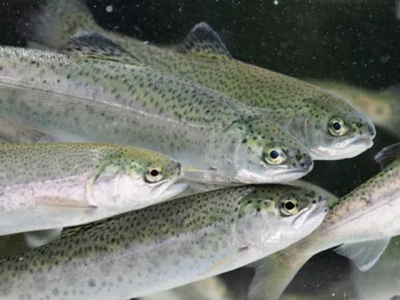Thin skin linked to smolt mortalities

Ensuring the improved performance of barrier tissues - such as skin - in smolts at the time of seawater transfer could improve fish health and save the aquaculture industry millions, according to new research.
The skin of salmon smolts becomes thinner and weaker in the period after transfer to sea
It’s estimated that 10-20 percent of all farmed salmon in Norway die between the time they are transferred to marine net pens and slaughter, of which a significant proportion are lost in the post-smolt phase – the months straight after transfer.
One reason for this is that salmon’s barrier functions are reduced in the period after transfer to the sea and take a long time to recover.
“The first period in the sea is a vulnerable phase, as the fish’s defence systems are weaker in the first three months. During this period, the fish are especially prone to injuries and infectious diseases. It is therefore important to understand why and how salmon’s barrier functions change and what the industry can do to adapt,” says Nofima scientist Christian Karlsen.
Together with his colleague Elisabeth Ytteborg, and other scientists in the CtrlAQUA project, he has studied how factors such as stress, temperature and treatment during transfer to the sea affect the fish’s external barriers.
“The results of the research show that the skin becomes thinner and weaker in the period after transfer, but as the fish adapts to the new environment, the skin stabilizes again,” says Ytteborg.
It is too early to conclude whether it is a single factor or combinations of environmental changes that cause the weakening of salmon’s external barriers.
“By increasing knowledge about the sensitive period in the sea, we will be able to suggest how the fish can be protected and handled more gently. Safer transfer of fish will ensure better fish health and fish welfare and will help reduce post-smolt mortality,” says Karlsen.
Once the research results are ready, the scientists can start developing new handling methods in collaboration with industrial partners and the salmon industry.
Có thể bạn quan tâm
 Asian aquaculture: trends for 2019
Asian aquaculture: trends for 2019 Aquaculture & environmental consultants Jonah van Beijnen and Gregg Yan outline some of the key developments they expect to take place in the Asian aquaculture
 Kiên Giang’s district expands two-stage industrial shrimp farming
Kiên Giang’s district expands two-stage industrial shrimp farming It involves breeding the shrimp are in round-shaped ponds covered with anti-sunshine nets and plastic sheets on their beds in a two – stage model.
 Vietnam’s tra fish exports to ASEAN up 18 percent
Vietnam’s tra fish exports to ASEAN up 18 percent Vietnam earned 55.17 million USD from tra fish exports to the ASEAN as of the late March, up 18 percent year-on-year